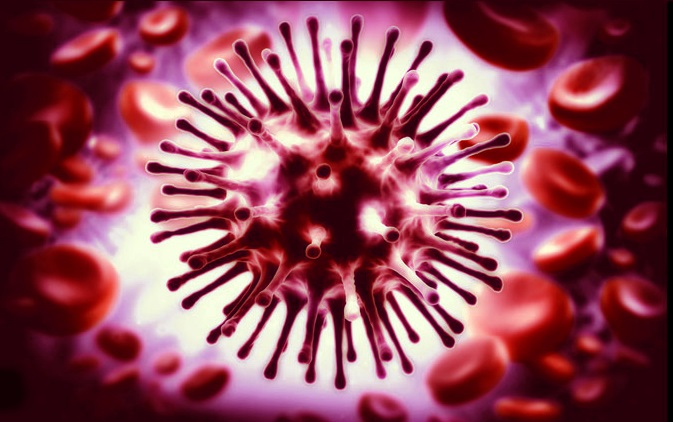South Korea Engineers Lethal H5N1 Flu Strain for Mammals Including Humans. Now We Just Have to Wait for a “Lab Leak”!
Nikhil Prasad Fact checked by:Thailand Medical News Team Jun 13, 2025 6 months, 3 weeks, 4 days, 7 hours, 6 minutes ago
Medical News: In a stunning and deeply unsettling development, scientists from South Korea have genetically engineered a mutant strain of the H5N1 avian influenza virus—commonly known as bird flu—that is capable of wiping out 100% of infected mammals, including humans. This bioengineered virus has not only been confirmed to be fully lethal in lab tests but also shows high potential for efficient human transmission, igniting fresh fears about the dangers of gain-of-function research and the looming threat of a potential “lab leak.”
 South Korea Engineers Lethal H5N1 Flu Strain for Mammals Including Humans. Now We Just Have to
South Korea Engineers Lethal H5N1 Flu Strain for Mammals Including Humans. Now We Just Have to
Wait for a “Lab Leak”!
The controversial research was led by Dr. Deok-Hwan Kim and Dr. Dong-Yeop Lee from Konkuk University in Seoul, and has sent shockwaves through the scientific and global health communities. According to this
Medical News report, the researchers began with a naturally occurring H5N1 virus collected from wild birds in Korea and introduced genetic manipulations that made it not just deadlier—but horrifyingly transmissible among mammals. The enhanced strain proved 100% fatal in mice, which are often used as models for human infection studies.
From Bird to Human with Terrifying Efficiency
At the heart of this chilling scientific experiment is a mutation in the PB2 gene of the virus, specifically at the amino acid position 627. The mutation, known as E627K, replaces glutamic acid (E) with lysine (K), and has been previously associated with improved viral replication in mammalian cells. In the wild bird-derived virus used in the study, only 4% of the viral particles initially carried this mutation. But after infection, the mutant quickly took over—reaching nearly 100% frequency in the lungs and brains of infected mice within just six days.
Two separate experiments were carried out using different challenge-to-contact ratios. In the first experiment, a 4:1 infected-to-contact ratio led to 100% transmission and death among both infected and contact mice. In the second, even with a 1:1 ratio, all infected mice died, and the virus successfully transmitted to 50% of the contact group. High viral loads were detected not just in the lungs but also in the brains, with infected mice exhibiting severe neurological symptoms such as seizures and loss of motor function.
A Mutation Designed to Invade the Human Body
One of the most alarming aspects of the study is how quickly the PB2-E627K mutation became dominant within hosts. Initially a minority mutation, it was selectively amplified as the virus replicated, suggesting it provides a powerful advantage in mammalian hosts. This mutation enhances the virus’s ability to hijack cellular machinery, increase polymerase activity, and even penetrate brain tissue—a combination that turns it into a potential neurological bioweapon.
Importantly, no other mammalian-adaptive mutations were found in the virus, indicating that PB2-E627K alone is suffici
ent to drive high-level lethality and inter-mammal transmission. In previous outbreaks, this specific mutation has been seen in only 1% of viral samples, but the number has been growing rapidly since 2021.
A Global Red Flag for Gain-of-Function Research
The implications of these findings are terrifying. Gain-of-function research—where viruses are deliberately altered to become more transmissible or deadly—has been widely criticized, especially after suspicions that a lab leak may have sparked the COVID-19 pandemic. This latest study is a stark reminder that such experiments are still taking place, despite global outcry and ethical concerns.
What’s more disturbing is that these experiments were carried out under Biosafety Level 3 (BSL-3) conditions, which, while stringent, are not immune to human error or containment breaches. History has already seen accidental releases from high-security labs, and this research raises the question: Are we engineering the next pandemic without realizing it—or worse, while fully aware of the risks?
Mice Today Humans Tomorrow?
While the researchers used mice as their experimental model, the virus’s ability to adapt and spread among mammals highlights a potential route toward human infection. With rising cases of H5N1 infections in various mammals globally—including mink, sea lions, and bears—the virus is clearly evolving. The concern is that just a single mutation—or a single mistake—could spark a catastrophic outbreak in humans.
Real-World Data Mirrors Lab Findings
From 2020 to 2024, numerous PB2-E627K mutations have been identified in wild and domestic birds in Europe and Asia. Out of more than 5,000 sequenced H5N1 viruses, only 53 carried the E627K mutation—but nearly all of those have emerged since 2021, raising red flags about natural selection of mammal-adaptive strains in the wild. Previous research even showed that this mutation doesn't negatively affect birds, meaning the virus can persist in them undetected before spilling over into mammals, including humans.
Conclusion
This unprecedented study shows just how easily a deadly virus can evolve—or be engineered—to cross the species barrier and decimate mammalian populations. The fact that a single mutation can turn an already dangerous avian virus into a mammal-killing machine should raise urgent global alarms. Although this was a controlled lab experiment, the lessons are chillingly real. Given how easily the PB2-E627K mutation emerged and spread in the test subjects, the threat of a similar adaptation occurring in nature—or being accidentally released from a laboratory—is no longer a distant possibility but a clear and present danger. Humanity cannot afford to ignore the risks of reckless gain-of-function experiments that may one day unleash a viral Armageddon.
The study findings were published in the peer-reviewed journal: Virology Journal.
https://virologyj.biomedcentral.com/articles/10.1186/s12985-025-02811-w
For the latest on entities conducting gain-of-function research, keep on logging to Thailand
Medical News.
Read Also:
https://www.thailandmedical.news/news/u-s-nih-finds-american-bovine-h5n1-shows-enhanced-neurotropism-compared-to-lethal-vietnamese-human-h5n1-strain
https://www.thailandmedical.news/news/another-worrisome-bird-flu-strain-h5n9-bird-flu-debuts-in-united-states
https://www.thailandmedical.news/news/hidden-mechanisms-of-bird-flu-evolution-reveal-shocking-cross-species-transmission-patterns
https://www.thailandmedical.news/articles/h5n1-avian-flu
https://www.thailandmedical.news/pages/thailand_doctors_listings
